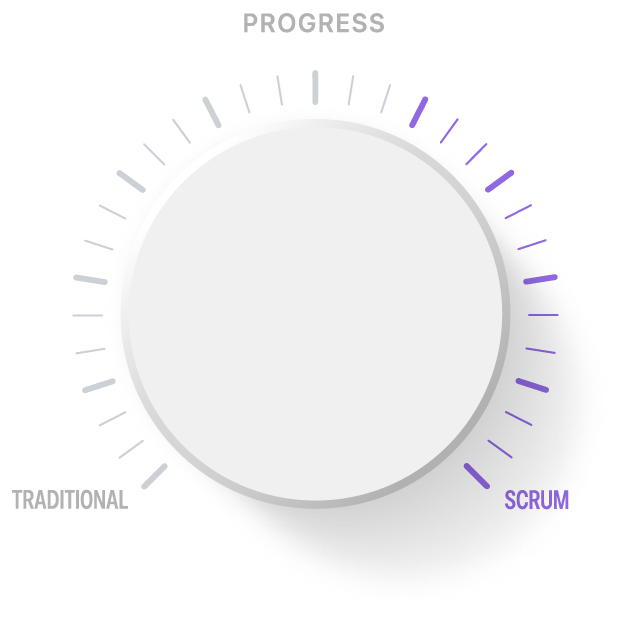

Scrum is all about embracing change, collaboration, and iterative development. It offers a light structured and adaptable way to tackle complex projects, enabling teams to deliver valuable products with high quality and effectiveness. By dividing work into manageable units called "sprints," Scrum empowers teams to focus on short-term goals, continually learn from feedback, and make necessary adjustments along the way, while following the overall organizational direction. With Scrum, you can foster transparency, maximize productivity, and achieve exceptional outcomes.

Although a lot of people think these two words are synonymous, they represent two different things. There are lots of ways to „do“ Agile, but there still is not one standard in the whole industry. For different people and organizations Agile has a different meaning. For us, Scrum is one of the frameworks from which Agile was derived from in 2001. resulting in the Agile Manifesto for Software Development.
Place focus on the value delivered by the Scrum teams.
Effectively deal with complex problems in the market.
Increase the organizations’ capability to adapt to ever-changing market conditions and opportunities.
Incorporate feedback loops for managing risk and increasing learning of the teams and organization.
Create a desired working environment for the employees.